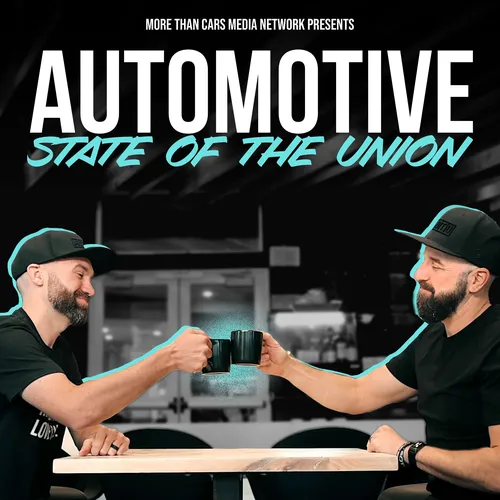Ford’s Factory Revamp, GM Leans Into Autonomy, Teachers Using AI
- Author
- More Than Cars Media Network
- Published
- Tue 12 Aug 2025
- Episode Link
- None
Episode #1119: Ford’s factory revamp signals a new EV era, GM doubles down on autonomy without the taxi business, and AI takes over lesson plans as teachers lean into technology’s potential.
Show Notes with links:
- Ford will invest $2B to transform its Louisville, KY plant into a high-efficiency hub for an affordable, tech-packed electric pickup—aiming to rival low-cost Chinese EVs when it launches in 2027.
- The new process cuts parts count by 20% with large single-piece aluminum castings.
- Parallel assembly lines replace traditional conveyors, boosting efficiency by 15%.
- Lighter, shorter wiring harnesses save weight and simplify assembly.
- Ergonomic workstations improve build quality while reducing labor strain.
- “This is a bold and difficult undertaking to compete with the best in the world,” said Doug Field, Ford’s Chief EV & Digital Systems Officer.
- From Cliff Banks on LinkedIn “One tiny fact -- that is big news, in our opinion -- that came out of Ford's second earnings call: Ford reduced the per-vehicle loss on its EVs from $44k to $22k last quarter. Keep that up, and its Model E division will be profitable much faster than expected.”
- After shutting down its Cruise robotaxi unit, GM is reigniting its autonomous ambitions—this time targeting personal-use driverless cars instead of fleet services.
- The new program starts with hands-free, eyes-free driving while a human is in the vehicle, progressing toward fully driverless capability.
- Sterling Anderson, former Tesla Autopilot chief is building a team by hiring new talent and inviting former Cruise employees back.
- GM is deploying lidar-equipped, human-driven test vehicles to log data and train simulation models that guide development.
- On GM’s Q2 earnings call, CEO Mary Barra named autonomous tech, expanding the domestic supply chain, and battery innovation as “our clear priorities.”
- Three years after ChatGPT’s public debut, many K-12 educators are moving from banning generative AI to using it as a tool for critical thinking, creativity, and tailored instruction.
- About 60% of teachers now use AI for lesson planning, grading, and parent communication, saving an average of 5.9 hours weekly.
- Early bans led students to hide AI use; now some districts are forming committees to guide ethical adoption.
- Teachers also use AI for individualized lessons, translation, accessibility, and real-world project design.
- Concerns remain about bias, privacy, and over-reliance, but advocates say benefits outweigh risks when guardrails are in place.
- “Educators are starting to realize that AI isn’t going away—and that it’s better to teach their students how to use it, rather than leave them to their own devices,” said a Drexel University professor.
Join Paul J Daly and Kyle Mountsier every morning for the Automotive State of the Union podcast as they connect the dots across car dealerships, retail trends, emerging tech like AI, and cultural shifts—bringing clarity, speed, and people-first insight to automotive leaders navigating a rapidly changing industry.
Get the Daily Push Back email at https://www.asotu.com/
JOIN the conversation on LinkedIn at: https://www.linkedin.com/company/asotu/
